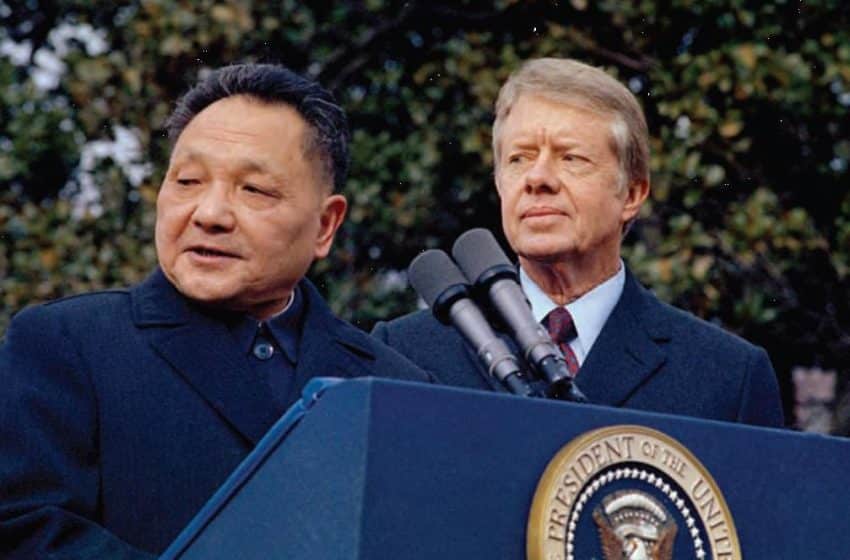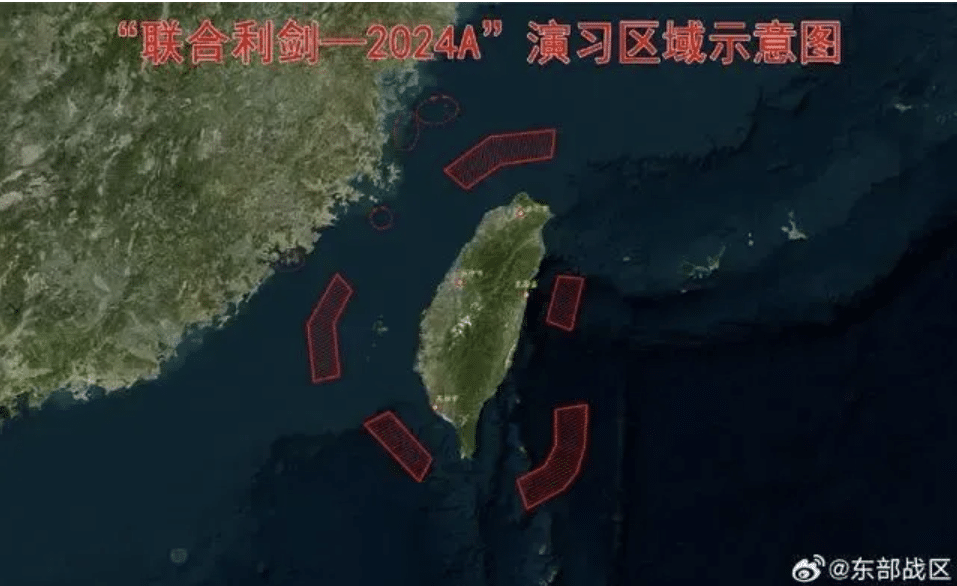China’s Middle East Opportunity
Chinese President Xi Jinping just finished his unusual Middle East trip, with the region in the midst of bitter rivalry between Iran and Saudi Arabia. Besides Riyadh and Tehran, his journey has an intermediate stopover at Cairo where the Arab League headquarters is located. Last November he traveled to Turkey for the G20 leaders’ summit. In a few months, the Chinese top leader has been hosted warmly by all of the resident major powers in the Middle East. Indeed, Beijing’s diplomatic activism with political savvy and prudence is well calculated, and it is strategically consequential to the region and the world at large.

As Richard N. Haass argues, a New Thirty Years’ War is unfolding in the Middle East. Undoubtedly, the regional order there is collapsing, and it must cause great harm to itself as well as global stability. The turmoil in the region embodies a number of profound challenges facing the existing world order. America’s war in Iraq broke the balance of power, which now tilts further toward Iran. With the ongoing Syrian crisis, the regional players have been caught in a deadly spiral of enmity, sharpening a sense of insecurity for all. In particular, Saudi Arabia, among other Arab countries, feels encircled by the Iran-led Shiite coalition. They are enormously worried about American retrenchment from the Middle East due to its pivot to Asia-Pacific, and vociferously opposed the Iran nuclear deal, which makes it harder to rein in Tehran’s ambitions.
In fact, the rise of Islamic State (IS) and the new Sunni revolution is by no means accidental. The IS is far more than a terrorist and extremist group composed of irrational non-state actors; rather, it is a product of geopolitical rivalry among fretful state actors. In other words, the religious radicalization and privatization of violence in the Middle East is deeply rooted, and the regular counter-terrorism operations are unlikely to win. What’s worse, Turkey has joined “the Great Game” which enshrines the rule “not play to win, but play not to lose”. A proxy war in the Middle East is utilized for competition over regional hegemony, and the regional stability is elusive.
From a Chinese perspective, the region becomes not only a battleground for Shiite, Sunni and Kurdish militias, but also an arena involving major external powers like the US, Russia and France. Syria is perceived by Russia as its only foothold in the Middle East, and it is a great asset for Moscow to curb terrorism expansion and seek strategic depth vis-à-vis the trans-Atlantic alliance. Together with the Ukraine crisis and the Greece debt crisis, the Syria crisis now pushes Europe into unprecedented hardship in post-Cold War era. Europe seems to become more fragile and divided. The recent Cologne assaults have shocked European capitals, and the refugee policy adds to political difficulties for German Chancellor Merkel, who is among the few aspirants to “More Europe”.
The whole world is suffering from the spillover effects of the Middle East mess. Certainly China cannot be immune to the scourge and Beijing must ponder deeply the strategic consequences of the deteriorating situation and the likely endgame in the Middle East. Although China’s thirst for oil and overseas markets remain strong, for the moment it is something more than economic interests that drive Beijing to further engage with the Middle East countries. To put it simply, the great power status can not be achieved and recognized unless China finds ways of passing the test of the giant mess in the Middle East.
As an ancient Chinese Strategist Sun Tzu says, “opportunities multiply as they are seized.” The Chinese word for crisis (危机) is divided into two characters, one meaning danger(危) and the other meaning opportunity(机). For most people the Middle East is a land of chaos, but it could be a land of abundance and opportunity. In front of the Middle East challenge, China shows confidence in its potential as a unique and constructive force. “Instead of looking for a proxy in the Middle East, we promote peace talks; instead of seeking any sphere of influence, we call on all parties to join the circle of friends for the Belt and Road Initiative,” President Xi said when addressing the Arab League in Cairo.
Since Xi took office in 2013, China has been pursuing its own version of strategic rebalancing in foreign policy. China aims to reposition itself as “a state in the middle”, acting as a bridge among the developed and developing countries and maximizing the strategic space. The “global partnership network” has become the buzzword of Chinese overall foreign policy. Compared to the “politics among nations”, Beijing has realized that how crucial the “politics among networks” is in empowering its rise in this century. If “control” was essential to be a great power in past centuries, “connectivity” is the most important necessity in the 21st century.
No doubt, the Middle East plays a vital role in Beijing’s connectivity-oriented grand strategy. Beijing is more attentive in monitoring the dynamics in the Middle East, and make “creative involvements” to help mitigate the tensions, resolve the hotspot issues, stabilize weak countries and respond to those countries’ “Look East” policy demands. With the Belt and Road Initiative (BRI) proposed by Xi in 2013, China seeks to strengthen mutual development resilience and generate synergies with partners including the Middle East countries. Beijing believes that the cooperation within the BRI framework may help address the causes of instability and radicalization of poor countries that have been on periphery of the global economic system.
In the past few years, China has entered into strategic partnership with eight Arab states and signed agreements with six Arab states on jointly developing the BRI. Turkey, Iran and seven Arab states were the founding members of the Asian Infrastructure Investment Bank initiated by China. At the Ministerial Conference of China-Arab States Cooperation Forum in Beijing In June 2014, Xi proposed a “1+2+3” cooperation pattern, namely to take energy cooperation as one priority, infrastructure construction and trade and investment facilitation as the two areas, and nuclear energy, space satellite and new energy as the three high –tech areas for breakthrough.
During his state visit to Saudi Arabia, President Xi said that FTA negotiations between the Gulf Cooperation Council (GCC) and China are expected to be concluded in 2016. In order to further tap the potential of cooperation with the industrialization of the Middle East countries, China will set up a $15 billion special loan and provide regional countries with $10 billion of commercial loans. With the UAE and Qatar, China will launch a $20 billion joint-investment fund for supporting infrastructure development and high-end manufacturing industries in the Middle East. By these efforts, China endeavors to advance the “oil and gas plus” cooperation model in the region, which wants desperately to avoid the natural resource reliance and embrace real prosperity.
Development and peace are inseparably intertwined, and it is not proper to label China as “free rider” in the Middle East issue. Trade, investment and jobs are the key to turning the tide against violent extremism. Beijing is fully aware of its advantages as well as limitations, cultivating its security role in the region in a very cautious manner. New opportunity should be given to China for doing its service in helping the Middle East.
By ZHAO MINGHAO Feb. 3, 2016 on China-US Focus.
Read more here








